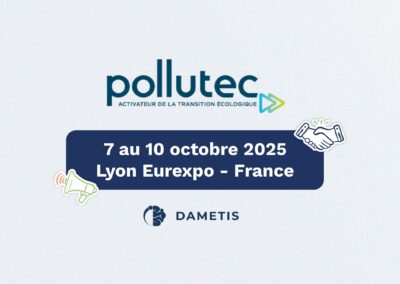
Fit for 55: Europe increases its energy-climate ambitions
Summary
1.The “Fit for 55”: What is it?
2. Strengthening the European Emissions Trading System
3. Creation of a second emissions trading system for buildings and road transport
4. Methane emissions from the energy sector are targeted
5. Renewable energy and energy efficiency remain at the core of European energy-climate policies
6. The rise of alternative fuels
7. Development of hydrogen and decarbonized gases
The “Fit for 55”: What is it?
The “Fit for 55” package, or “Adjustment to 55” in French, is a broad European legislative package. Its name comes from its flagship measure, which underpins all the objectives: reducing the European Union’s greenhouse gas emissions by at least 55% by 2030 (compared to the reference year 1990). This legislative package represents a significant strengthening of European greenhouse gas reduction ambitions, as the previous target aimed for only a 40% reduction in EU emissions by 2030 (still compared to 1990).
This package aims to align all European legislation with this reduction goal. This is, in fact, its distinguishing feature, even its strength: it covers a very wide range of areas. Here’s an overview of the main measures.
Strengthening the European Emissions Trading System
The European Union Emissions Trading System (SEQE-EU), called Emissions Trading System (EU-ETS) in English, is a cornerstone of European decarbonization policies.
Le Fit for 55 accroît encore son importance avec plusieurs mesures clés :
- A faster reduction of emission quotas in the system from -2.2%/year to -4.3%/year during the 2024-2027 period, then -4.4%/year from 2028-2030. A measure that, all else being equal, tends to push the price of a ton of CO₂ upward. 2.
- The inclusion of maritime transport covering 40% of verified emissions from the sector starting in 2024, 70% from 2025, and 100% from 2026.
- The implementation of the global carbon offsetting and reduction scheme for international aviation, known as CORSIA (Carbon Offsetting and Reduction Scheme for International Aviation).
- The gradual phase-out of free quotas allocated to certain industrial sectors between 2026 and 2034…
- …coupled with the effective implementation in 2026 of a carbon border adjustment mechanism (CBAM) to preserve the competitiveness of the affected European industries.
For more details on these various measures, you can read our article “EU-ETS Reform: A Challenge for European Industries.”
The creation of a second emissions trading system for buildings and road transport
The current SEQE-EU covers emissions from industrial, maritime, and aviation sectors. However, two other high-emission sectors are currently not included: road transport and buildings. This is why the European Union is preparing to expand this CO₂ emissions trading mechanism with a separate mechanism called ETS 2, operating on the same principle. This ETS 2 could be fully operational by 2027.
To mitigate the impact of this ETS 2 on households and small businesses, the European Union is creating a social climate fund aimed at directly helping vulnerable households, vulnerable microenterprises, and vulnerable transport users who could be affected by this new mechanism.
It should be noted that Fit for 55 also includes a tightening of emission standards for cars and vans with an ambitious target: a 100% reduction in emissions by 2035 for new cars and vans.
65 billion euros
The maximum amount allocated to the social climate fund
Source: European Commission
Methane emissions from the energy sector are also targeted
Methane is one of the four main greenhouse gases (along with CO2, nitrous oxide, and fluorinated gases) and the 2largest contributor in volume after CO2
. Problème, le méthane est un gaz à effet de serre beaucoup plus puissant que le CO 2 :Its global warming potential is more than 80 times greater than CO₂ over a 20-year period.
If methane emissions from the agricultural sector are challenging to reduce, the European Union believes that the energy sector (accounting for about 20% of total methane emissions) can make efforts to cut them. This is why the Fit for 55 plan introduces new requirements for the oil, gas, and coal sectors, such as the obligation to measure and verify emissions through an independent body, detect and repair leaks, and more.
Renewable energy and energy efficiency remain at the core of energy-climate policies
At the end of 2008, the European Union adopted its first energy-climate package for 2020. The predecessor of Fit for 55, this package set the target for renewable energy to represent 20% of Europe’s energy consumption by 2020. And this target was met.
As part of its 2030 climate package, the European Union aimed to increase this share to 32%. However, Fit for 55 now targets a 40% share of renewable energy in all energy consumption by 2030. Notably, following the gas crisis and the war in Ukraine, Europe has raised this target again to 42.5%, still by 2030.
The same applies to energy efficiency, with the goal of reducing European final energy consumption by 11.7% by 2030 compared to the projections made in 2020 (see our article “The Redesign of the Energy Efficiency Directive”).
Fit for 55 also includes very high ambitions for the energy performance of buildings, prioritizing the least efficient buildings.
All new buildings to be zero-emissions by 2030
All existing buildings to be zero-emissions by 2050
European objectives for the building sector
Source: European Commission
The rise of alternative fuels
The aviation sector is required to use sustainable fuels (such as advanced biofuels or synthetic fuels derived from hydrogen, for instance). Starting in 2025, sustainable fuels, broadly defined, must account for 2% of the fuels used in aviation. This share will then increase to 6% in 2030, 34% in 2040, and 70% by 2050.
Moreover, synthetic fuels must represent at least 1.2% by 2030 and 35% by 2050. This specific timeline for synthetic fuels is due to the fact that they are currently produced in very limited quantities.
The maritime sector is also concerned, with a requirement to reduce its carbon intensity (compared to the average observed in 2020) by 2% in 2025, 6% in 2030, 31% in 2040, and 80% in 2050.
Finally, Fit for 55 mandates an acceleration of the deployment of infrastructure for alternative fuels, including:
- Electric vehicle charging stations every 60 km on major routes (by the end of 2025 for cars and by the end of 2030 for trucks over 3.5 tons).
- Hydrogen refueling points every 200 km on major routes by the end of 2030.
- At least one electrical supply in navigation ports by 2030, and the possibility that at least 90% of container ships can be powered by electricity in maritime ports.
- Electric supplies at all parking spots next to airport terminals.
The Development of Hydrogen and Decarbonized Gases with the “Fit for 55”
Finally, Fit for 55 addresses the issue of natural gas, which emits half as much as coal, for example, but remains a fossil fuel that emits CO₂.
The European Union is betting on the development of decarbonized gases. These can include renewable gases (biogas and biomethane) or hydrogen produced from renewable energy sources. Europe’s ambitions in this field are, once again, very high.
66%
The target share of renewable and low-carbon gases by 2050 (compared to 5% currently).
Source: European Commission
All of these legislative measures aim to achieve three main objectives:
- Ensure that the ongoing transition is fair and socially equitable.
- Maintain and strengthen innovation and the competitiveness of European industry (while ensuring fair competition with non-European economic actors).
- Support the position of the European Union as a leader in the global fight against climate change.
More broadly, Fit for 55 aims to put the European Union on the path to carbon neutrality by 2050.


















